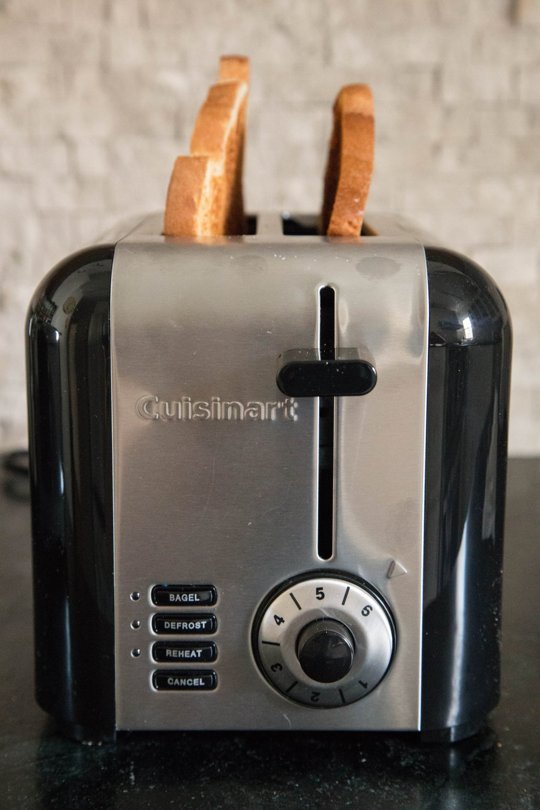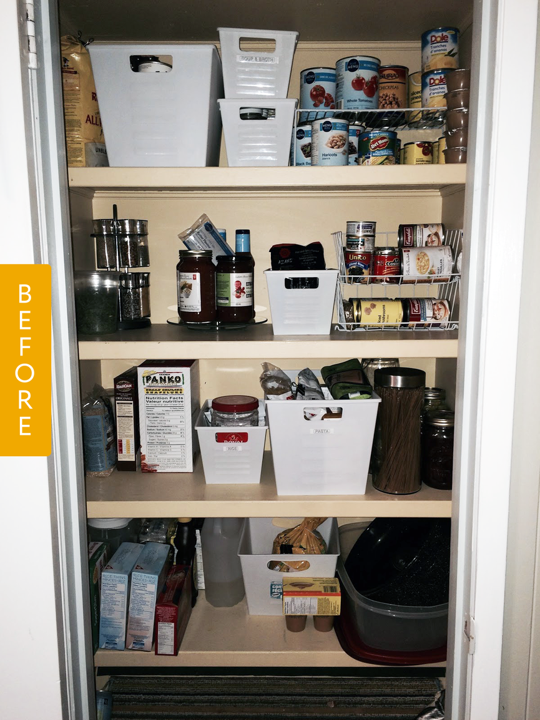
This
post was originally published on
this sitehttp://www.marksdailyapple.com/
 This is a guest post from Todd Kuslikis of AShotofAdrenaline.net.
This is a guest post from Todd Kuslikis of AShotofAdrenaline.net.
Warning: Some of you are about to think I’m crazy. For those of you who haven’t heard of isometrics, this strength building concept is going to make you think I’ve officially walked off the deep end. Functional strength and awesome muscle mass gains with out even moving? This must be some kind of joke, right?
It’s not. Let’s do a little experiment. Stop what you’re doing for a second, sit up straight and bring your palms together, fingers pointing out, about 12 inches away from you. Now press them together as hard as you can. Breathe. Breathe more. A little more. And…. stop.
How do you feel? Arms and pecs a little tired? They should be. You’ve just had your first introduction to “Palm Pushes”, an isometric exercise. If you’re used to more conventional, dynamic strength training techniques, you might still be feeling a little confused. How did you manage to create so much engagement without moving a muscle?
It’s elementary functional anatomy, dear Watson. When you exert force on a muscle, it has to adapt in some way. If you think about it, this is the foundation of strength training. By forcing the muscle to adapt to new challenges, we encourage it to grow stronger in preparedness to meet those challenges.
There’s more than one way for the muscles to adapt, however. Pull out your rusty high school Greek for a second, and let’s define some terms. In an isotonic contraction, the contraction strength (the tone of “tonic”) stays the same (“iso”), and the length changes. This is the kind of muscle movement we’re familiar with. Isotonic contractions are how we do all those little things that require lengthening and shortening muscles, like walking and picking up objects. You know, small stuff.
Isometric contractions, however, may seem a little more confusing. How do we contract muscles without moving them or changing their length? Think back to the exercise at the beginning. Because the hands were pressing together, the muscle length couldn’t change. There was nowhere for it to go! Here the contraction strength changes, while the length (“metric”) stays the same. We use this every day without thinking about it, for stuff like… standing erect. It’s the tone changes in our muscles that keep us constantly adapting to surroundings so we can defeat the demands of gravity.
Isometric exercises take advantage of these tone contractions to build strength. Believe it or not, they’re in some cases even more effective than dynamic exercises. You really can build strength without even moving. In one nine-week study, participants got a little lopsided, working one set of quadriceps with isometrics, and the other with a dynamic workout. While both legs had a similar increase in dynamic strength, the isometrically trained leg had a significantly higher increase in isometric strength. Isometrics are two-for-the-price of one.
How is this possible? Isometric training goes full-throttle, working muscles at their maximum and for extended periods of time. Dynamic exercises, on the other hand, produce force only for split seconds before velocity and acceleration take over. Because intramuscular tension is greater and held for longer than in dynamic exercises, isometric training achieves unique results.
The “father of plyometrics,” Dr. Yuri Verkhoshansky, supposed that a six second isometric contraction is equivalent to numerous dynamic contractions. When you stop to think about it, it makes a lot of sense. More time at maximum tension = greater rate of strength increase. It’s like Dr. Spock logical. Adding 10-20 seconds of intramuscular tension per session, then, can have a surprisingly major effect on strength gains. (Check out this great piece on StrengthNutrition101 for more info).
Isometrics have other fun benefits. Recent studies have shown that these exercises can help lower high blood pressure, for starters. But there’s a whole set of other unique benefits to isometric training that work on a subtler level. Isometrics require us to train our brains, with a whole slew of awesome effects. We’re going to get into a little woo-y new age-y mind-body connection stuff in a minute. Just try to think of it as strength training for your brain, making you smarter and more focused.
On a basic level, these exercises increase our body awareness. In order to perform isometrics, we have to learn how to send messages to specific muscles in the body. It’s easy to tune out a bit in dynamic exercise. No matter how form-conscious we are, everybody’s just switched their brain off for a strength training workout. Bad news: with isometric exercise, that’s no longer possible. Performing these exercises means consciously activating muscles. You’re going to have to think. You’re going to have to use you brain.
Doing isometrics, then, is a little like re-wiring the electrical system of your body. Or better yet, upping the connection speed on the Wi-Fi. You’ll forge and strengthen new neural patterns, cultivating powerful mind-body connections. As our world becomes more and more technology-oriented, we tend to live less and less in our physical bodies. Isometric training brings us back, reconnecting our brains with the incredible tool that is our human form.
Science backs this up. There’s a teeny little side note in this study, that I love because it tells a really revealing story. One of the subjects began the study unable to activate his quadriceps. Couldn’t do it. He’d send the message, and nothing would happen. After completing the study’s isometric program, however, he was able to engage his muscles on command. The isometric training had not only strengthened his muscles, but also cultivated the connection between his brain and his body. Another study used brain MRIs to measure the effects of isometric exercises and found “evidence for strength training-related change in white matter and putamen in the healthy adult brain.” Isometrics changes your brain. That’s some next-generation, sci-fi, Human 2.0 type stuff.
Intense as this sounds, it’s hardly a new concept. Many ancient meditative practices, such as hatha yoga and tai chi, utilized long held isometric exercises to hone the mind. Unlike dynamic exercises, isometrics don’t offer us any distractions. They’re self-confrontational. There’s no escape route, nowhere to hide from your thoughts – a rare situation in our over stimulated, smartphone-ruled day and age. In the stillness of an isometric exercise, unable to distract yourself with movement or check your Facebook, you’re suddenly very alone with yourself. You’re alone with the decision to exit the posture or stay a few more breaths. You’re alone with your thoughts and feelings.
This can be a scary proposition. Over time, however, you can consciously cultivate the same stillness within that isometrics cultivates without. Concentrating on these postures, regulating the breath, we find the mind becoming steady and calm. The stronger this mental state becomes, the stronger we are in the exercise. This mind-body connection creates a continual loop, with the mind growing stronger with the body, and vice-versa. The result is a calm, stable mental state that allows us to live a little less reactively and a little more intentionally. And while all that sounds like hippie-speak, it can actually have major positive effects on your life.
Okay, enough talk. Time for some action. You have lots of good incentive to get started. I’ve included a little taster isometrics workout for you below. Remember: these exercises are just a sample, and barely scratch the surface of the wide, varied, interesting world of isometric training. Start here… then explore!
A few tips before you begin:
1. Go full out. Make each contraction as tight as possible, no excuses. A 2002 study had two groups of subjects practice isometric exercises, one at 100% maximum voluntary isometric contractions, and the other at 60%. While both groups had significant gains in muscle volume, the 100% group saw much higher gains than the 60% group. So go big, or go home.
(The only exception to this is if you have high blood pressure. While isometric exercises have been shown to lower blood pressure, exercising at a high level of intensity can cause dramatic increase in blood pressure. If you have high blood pressure, work at a lower intensity – you’ll still see results!)
2. Work smart. Depending on what your goals are, you’ll want to use these exercises in different ways. According to Dr. David Williams, a “higher number of contractions increases strength, while holding contractions longer increases muscle mass.” If you’re looking to bulk up, long holds are the way to go!
3. Keep it active. While long held, passive isometrics can build strength, your training will be more effective if you choose active isometrics. Active isometrics exert force to fatigue the muscle, which helps “develop muscle and strength much quicker than passive isometrics, such as holds and stances,”according to physical culturalist Jarell Lindsey. Pressing into the ground or the wall can up the ante on passive isometrics. In the exercise shown below, for example, really digging your heels into the ground is essential.

4. Breathe. Seriously. There are several ways you can approach the breath. The most important thing is to keep it steady, full, and unstrained. If you don’t know where to start, take a cue from some people who know a thing or two about breathing – yoga people. Vinyasa styles of yoga often cultivate a “breath with sound,” frequently called ujjayi breathing or ocean breath. Take even inhales and exhales through the nose, letting them rush through the back of the throat to create a sound like ocean waves (or Darth Vader). Five breaths will be around 30 seconds. Concentrating on the breath in this way not only keeps you safe throughout your workout, it also helps cultivate a strong, steady mind. General rule of thumb: When you’ve stopped breathing, you’ve gone too far.
The Workout
Wall Pushes: Get in a low lunge position and place your hands on the wall at about chest level. Lean into the wall and push with all of your strength. If you slide backwards you may need to put on shoes with a good grip. It’s very important to push as hard as you can in order to fatigue the muscle. Hold time: Complete 2-3 repetitions, holding for 30 seconds or longer, resting for 45-60 seconds between reps.

Gun Show: Bring your arms to a 45-degree angle. Imagine your biceps getting tighter and tighter as you breath in. After you complete position one, move to the next position, bringing the arms higher as shown in the picture. Tighten as much as you can, then relax. Move on to the third position, tighten as much as possible, and relax. Hold time: Move with the breath, holding each position for one long inhale and moving to the next as you exhale. Repeat 2-3 times, resting for 20-30 seconds between sets.

Wall Extensions: Stand with your back toward the wall. Bend over at the waist and place the outer edges of your fist (on both hands) against the wall. Push with all your strength against the wall. You’ll notice your tricep muscles fully engage. Hold time: Complete 2-3 repetitions, holding for 30 seconds or longer, resting for 45-60 seconds between reps.

Field Goal Pushes: Stand about 1-2 inches away from a wall facing outward. Raise your arms up so they are parallel with the floor. Place your elbows in a 90 degree angle. Your arms should look like a field goal. Push your elbows and forearms into the wall as hard as you can. You should feel this in the middle of your back – if you don’t, try placing the arms perpendicular to the floor, as pictured below. Hold time: Complete 2-3 repetitions, holding for 30 seconds or longer, resting for 45-60 seconds between reps.

Basic Abdominal Isometric (“The Triangle”): Massive core muscle engagement, while “just sitting there.” Imagine a triangle made by your floating ribs and the spot just beneath your navel. Sitting on the floor, spine straight, exhale to draw the floating ribs towards the spine and activate the lower abdominals. As you inhale, maintain the activation of this triangle, keeping the shoulders down as the rib cage and expands. Hold time: Complete 2-3 repetitions, holding for 30 seconds or longer, resting for 45-60 seconds between reps. Try growing the length of the hold overtime, eventually completing one repetition of 2-5 minutes (build this slowly).
Turtle Crunch: This unique isometric ab exercise is an extreme activation of the triangle. If you couldn’t quite figure out the triangle before, you definitely will after experiencing this. Position yourself on the floor face down in a fetal position. Your arms cross in front of you and rest against your knees and thighs. Use your abs to curl your upper body into your thighs while using your arms as a point of resistance. Hold time: Push as hard as you can for 30 seconds or longer. Complete 2-3 repetitions, resting for 45-60 seconds between reps.

Plank: You’re probably at least a little familiar with this one. Place the hands under the shoulders, and extend the legs behind you, so you’re flat like a board, shoulders, hips, knees, and ankles in one line. Now make it active, pressing back through the feet, reaching the chest forward, and engaging “the triangle.” Breathe! Hold time: Aim for at least a minute. Repeat 2-3 times, resting for 45-60 seconds between reps.
Pushup Hold: From plank position, exhale into a pushup, keeping the elbows in and the gaze forward. Don’t forget to continue engaging that triangle! If you feel any discomfort in your low back, you’ve lost our abdominal support, and it’s time to back out. Hold time: Aim for at least 30 seconds. Repeat 2-3 times, resting for 45-60 seconds between reps.
Wall Sit: Stand with your back against the wall, feet hip-width apart. Bend your knees, bringing your thighs parallel to the ground. Avoid leaning forward – keep your core engaged and your sternum lifted. Press down through your heels into the ground and try to squeeze your feet together, engaging your inner thighs. Hold time: Aim for at least 30 seconds. Repeat 2-3 times, resting for 45-60 seconds between reps.
Check out Todd’s bodyweight exercise blog, AShotofAdrenaline.net.

 This post was originally published on this site
This post was originally published on this site






 This
This 
 This
This 
 This
This 
 This
This 

 This
This 

 This
This 
 This
This  This is a guest post from Todd Kuslikis of
This is a guest post from Todd Kuslikis of 






 For now classes are 6pm and 640pm at 2840 Wildwood st in the Boise Cloggers studio.
Book your class NOW!
click this ==>
For now classes are 6pm and 640pm at 2840 Wildwood st in the Boise Cloggers studio.
Book your class NOW!
click this ==>








